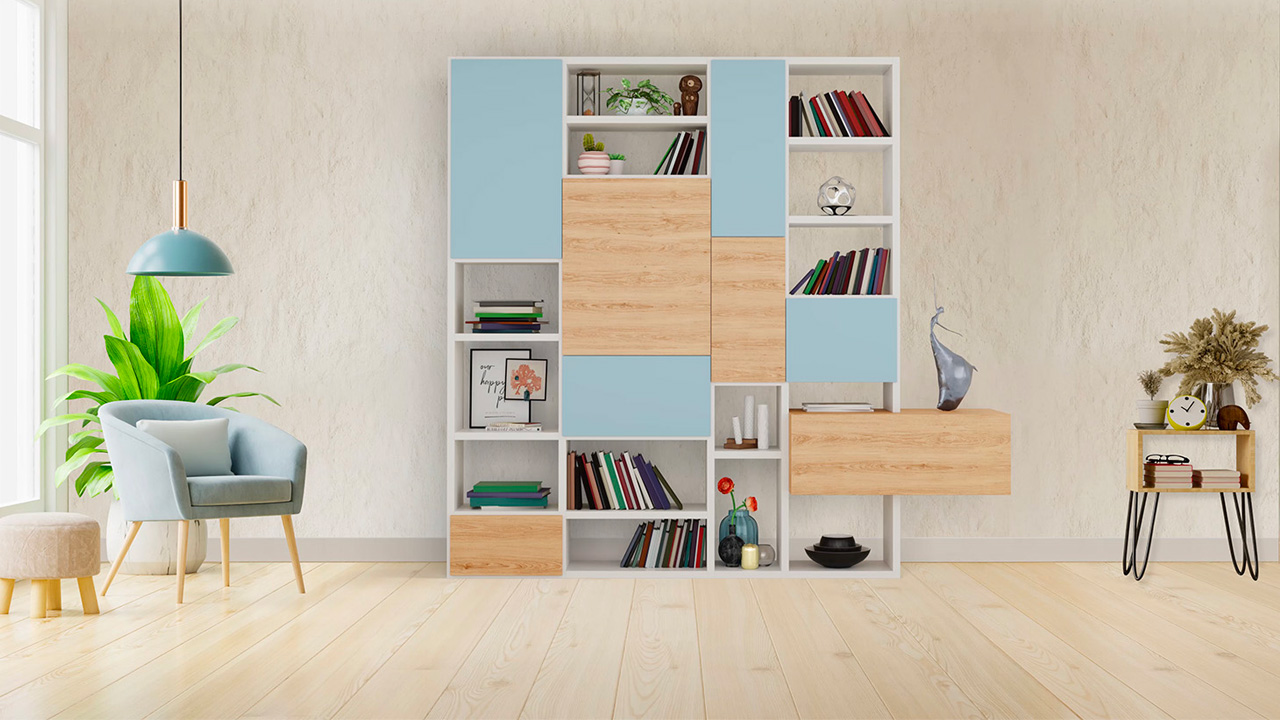How to reduce manufacturing lead times and overheads.…
Furniture Manufacturing

Simone Francavilla

Given fluctuating prices and supply chain issues, is it possible to easily set and manage furniture products, prices and quotes? Right now, lead times are longer than ever, pressure on supply chains are putting a huge strain on businesses, and outdated manufacturing processes only exacerbate the problem. But there is a solution, nonetheless.
Production systems that are separate and don’t integrate mean more room for error as data has to be manually transferred. And, because more manpower is often needed to make these systems work, scaling up business can become too expensive and ultimately unviable.
But there is another way. A growing number of manufacturers are looking to digitise and integrate their production processes. They are moving away from multiple systems which often blend a confusing combination of analogue and digital solutions, towards just one.
So, what are the problems with traditional manufacturing processes and how can one system solve these problems?
Communication breakdown
With traditional manufacturing processing set-ups there might be five or more different software systems at play – one to handle the initial order; one for BOM; one for CNC or CAD; CPQ software to price and finally software to present the finished product in digital form to the customer.
The problem with this scenario is that each of these systems communicate differently and don’t always integrate or integrate seamlessly. The process is fragmented and time-consuming. There is also room for human error as information is transferred from one system to another. This can lead to loss of information and errors in ordering and production.
To overcome this, there has been a rise in visual CPQ software being used in manufacturing. This type of software combines a 3D product configurator with end-to-end production management. It can take all systems, from initial customer order, to visualisation, to production and roll them all into one neat package. In this package, all the elements speak the same language and can communicate automatically, to transfer data at every stage because they all use one central database.
One company that has taken advantage of this software to accelerate their growth is Calia Italia. They are a manufacturer and retailer of premium sofas and seating, producing more than 1,000 seats every day, with over 50 new models every year, in 40 different leather and fabric coverings and with more than 400 colour variations.
In the past Calia Italia collected orders generated by retailers through various methods. A commercial document would then be sent to HQ for screening and insertion in the management system, with consequent time for analysis and validation.
Now they adopt a single software for the acquisition of the order, through their own stores to which they have distributed the licenses, and validate the products chosen by the end customer in a few steps in the internal offices. The company has achieved a very important reduction of errors and a reduction in delivery times, thanks to the easing of the work of both employees and the distribution chain itself. Essentially, the company can now easily set and manage furniture products, prices and quotes through one solution.
Calia Italia Marketing Manager, Marienza Calia, comments: “Using this new system both in the company and in the distribution network, has significantly improved our order request processing practices, allowing the production and sale of our sofas to customers in half the time.”
Wasted time through duplication
In addition, having a large number of separate systems leads to wasted time and duplicated effort. A time lag between sales to production; a time lag in setting up new furniture ranges across all stores and online; and inflexibility for the customer as the sales experience will be inherently limited, with no options for consumers to customise their order.
An all-in-one system is flexible and fully scalable. It simplifies 3D configuration and integrates processes from retail to production and optimises production management. In addition, it can automatically create catalogues so that retailers always have the latest catalogues to sell from, as soon as they become available. So, an all-in-one system covers all processes.
Furthermore, by integrating a web-based configurator directly to an e-commerce website, retailers and manufacturers can be empowered to put the power of 3D design into the hands of the end customer.
Customised furniture or cabinets can be created by users, with pricing and styles automatically provided, allowing them to buy direct from the website. Users can see exactly how products will look as they configure them, with real-time 3D renders that bring the products to life.
Cattelan Italia introduced 3CAD, our 3D configurator, to increase sales of their furniture online. They design and manufacturer furniture and furnishing accessories and are known for their luxurious designs and high-quality finishes.
Initially, Cattelan Italia mainly used traditional pen and paper to configure designs. The organisation created the furniture piece ‘Airport Bookcase’ which features multiple configuration possibilities and therefore Cattelan Italia needed to provide retailers with a professional and innovative tool to design and calculate this complex bookcase, as well as other complex products.
3CAD enables Cattelan Italia to configure and showcase the selected product in a range of finishes, colours and materials in real-time. Products in the range can also be viewed in 360° 3D views, enabling users to zoom in and rotate products to take a closer look at the details.
The configurator enables each product to be customised in just a few clicks, whilst ensuring that catalogues are always up to date with the very latest products and accurate product information.
Furthermore, 3CAD requires no installation and can be directly accessed from the manufacturer’s website within all common browsers and operating systems.
“Now we also use 3CAD next internally, to develop or simply check orders and process them later,” says Lucio Boniver – IT Manager.
Large overheads preventing expansion
From a manufacturer perspective, digitising the design process frees up staff so they can get on with selling. A digital design template is also much easier to replicate by others meaning that less investment will be required in training staff – you’ll be able to hire a sales person and not worry about technical knowledge.
There is also a current drive by manufacturers towards digitalisation, as they recognise the benefits for optimising and streamlining processes, as well as dealing with more complex products and orders, where customer personalisation might be at the heart. However, digitising, when you have a combination of analogue and digital systems can be a difficult thing to navigate so it makes sense to have everything in one place.
Fami is a leading global producer of high-quality industrial and workshop furniture. In 2003, Fami launched Store Van, which fits out vans of small craftsmen, as well as large commercial fleets with interior racking and furniture solutions.
When Fami launched Store Van, the sales rep would use their technical knowledge to create bespoke plans for each customer, based on the customer’s specific needs.
This meant the sales team needed a lot of technical knowledge to create plans, which made recruitment harder, as the skill set required was complex. The sales team were also crucial to the fulfilment of each offer, which slowed down production and details were often lost between sales and production, causing errors. Finally, because customisation for each customer was completed by hand, mass production of that customised design was not practical.
With the 3CAD system, the design can be quickly and easily created and then sent directly to production, and because the transfer is seamless, no data is lost in the process.
Fami Spa CEO Luca Milani comments: “3CAD has allowed our sales professionals to spend more time on what they are best at: the business proposition.”
Conclusion
We live in an increasingly digitised and competitive world and one in which consumer’s expectations are higher than ever. There is more pressure on manufacturers to produce higher quality products and offer better service, for less money in return. More and more companies are recognising the value of moving away from analogue or disparate digital systems towards integrated digital and online systems which are more streamlined, more secure and more reliable.
An all-in-one visual CPQ software system can make your business more efficient now and in the future, as these systems can grow with you because they have the flexibility to adapt to an ever-changing marketplace.
An all-in-one visual CPQ software system can take over many of the technical jobs and the menial repetitive tasks, leaving your sales teams free to sell. And, such a system allows end customers to play a part in designing and customising their products, which is a highly attractive proposition in a world where personalisation is valued so highly.
To learn more, visit our furniture and manufacturing industry pages to find the right design software for your needs.
Related blogs

3D product configuration – Making the impossible, easy
There are many benefits to 3D production configuration, from increasing the volume of furniture sales to streamlining the process for you and your customers.

Continuing my journey with the CKCA: Technology and the future of manufacturing
The CKCA is the voice of the Canadian kitchen cabinet industry – one that connects members to inspire progress, innovation and quality. That’s why I’m so happy to be kicking off my second three-year term on the Board of Directors.

The financial benefits of moving to the cloud
Learn about the financial benefits of moving to the cloud, including cost savings, predictable expenses, and reduced maintenance costs.